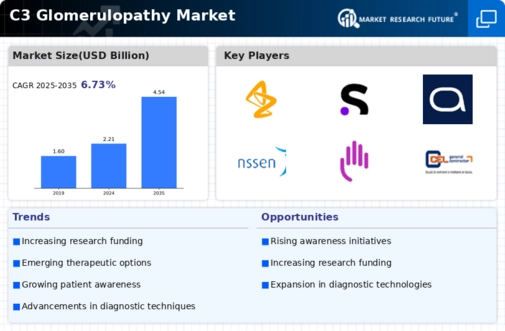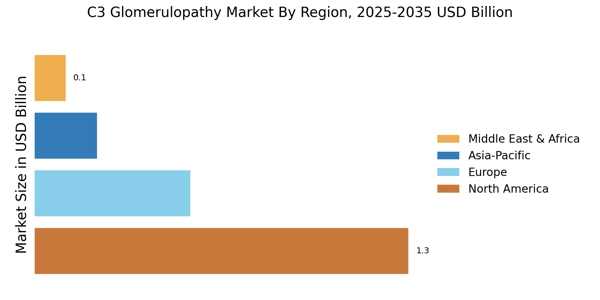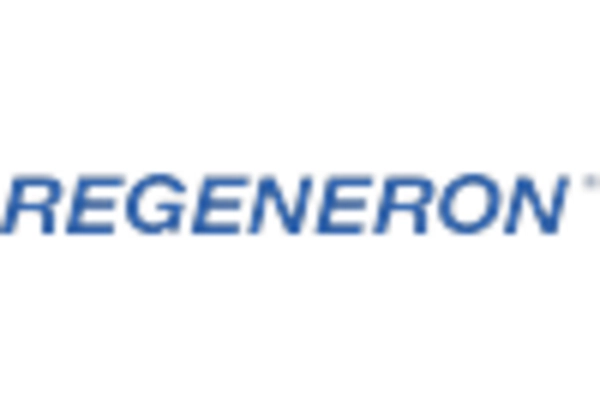Rising Healthcare Expenditure
Rising healthcare expenditure is a significant factor influencing the C3 Glomerulopathy Market. As countries continue to invest in healthcare infrastructure and services, there is an increasing focus on rare diseases, including C3 Glomerulopathy Market. This trend is reflected in the growing allocation of funds for research, treatment, and patient care. With healthcare spending projected to increase by approximately 5% annually, the market for C3 Glomerulopathy Market treatments is likely to benefit from enhanced funding and resources. This financial support can facilitate the development of new therapies and improve access to existing treatments for patients. Additionally, as healthcare systems prioritize the management of chronic conditions, the demand for effective interventions in C3 Glomerulopathy Market is expected to rise, thereby driving the market forward.
Emergence of Targeted Therapies
The emergence of targeted therapies represents a transformative trend within the C3 Glomerulopathy Market. Recent developments in biopharmaceuticals have led to the creation of therapies that specifically target the underlying mechanisms of C3 Glomerulopathy Market. These innovative treatments are designed to modulate the complement system, which plays a crucial role in the pathogenesis of the disease. The market for these therapies is expected to expand significantly, with projections indicating a potential market size of over 1 billion USD by 2030. As more targeted therapies receive regulatory approval, the treatment landscape for C3 Glomerulopathy Market is likely to evolve, offering patients more effective options. This shift towards precision medicine not only enhances treatment efficacy but also aligns with the broader trend of personalized healthcare, thereby driving growth in the C3 Glomerulopathy Market.
Advancements in Diagnostic Technologies
Advancements in diagnostic technologies are significantly influencing the C3 Glomerulopathy Market. The development of more precise and efficient diagnostic tools, such as genetic testing and advanced imaging techniques, has improved the ability to identify C3 Glomerulopathy Market at earlier stages. This is crucial, as early diagnosis can lead to better patient outcomes and more effective treatment strategies. The market for diagnostic tools is projected to grow, with estimates indicating a compound annual growth rate of around 8% over the next five years. As healthcare systems increasingly adopt these technologies, the demand for accurate and timely diagnosis is expected to rise, thereby driving the overall market for C3 Glomerulopathy Market. Enhanced diagnostic capabilities not only facilitate better patient management but also encourage research and development in therapeutic options, further propelling the C3 Glomerulopathy Market.
Increasing Incidence of C3 Glomerulopathy
The rising incidence of C3 Glomerulopathy Market is a pivotal driver for the C3 Glomerulopathy Market. Recent studies indicate that the prevalence of this rare kidney disease is on the rise, with estimates suggesting that it affects approximately 1 in 100,000 individuals. This increase in cases necessitates enhanced diagnostic and therapeutic options, thereby propelling market growth. As healthcare providers become more aware of the disease, the demand for specialized treatments is likely to escalate. Furthermore, the growing recognition of the disease among nephrologists and general practitioners is expected to lead to earlier diagnosis and intervention, which could further stimulate the market. The increasing patient population is anticipated to create a robust demand for innovative therapies, thereby shaping the future landscape of the C3 Glomerulopathy Market.
Growing Investment in Research and Development
Growing investment in research and development is a critical driver for the C3 Glomerulopathy Market. Pharmaceutical companies and research institutions are increasingly allocating resources to understand the pathophysiology of C3 Glomerulopathy Market and to develop novel therapeutic strategies. This trend is evidenced by a surge in clinical trials aimed at evaluating new treatment modalities, with over 50 trials currently registered worldwide. The financial commitment to R&D is expected to yield innovative solutions that address unmet medical needs in this area. As the understanding of the disease improves, it is likely that more effective treatments will emerge, further stimulating market growth. The collaboration between academia and industry is also anticipated to enhance the pace of discovery, thereby contributing to the overall advancement of the C3 Glomerulopathy Market.


















Leave a Comment